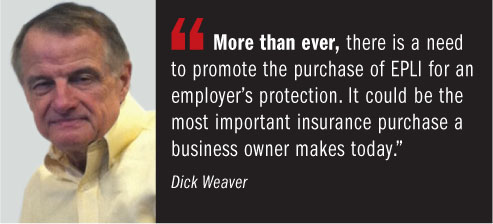I was recently intrigued by a question in a marketing piece from one of the major carriers for employment practices liability: "Who is Lilly Ledbetter and how is she helping you sell EPLI?"
Amid the ever-changing legal, economic and social landscape that affects employee-employer relations, numerous articles describe the number of charges filed with the Equal Employment Opportunity Commission, average costs of defense, trends in the types of allegations and by whom, etc. But the Lilly Ledbetter case seemed to put a personal spin on the ever-ongoing issue. So I picked up the telephone and called her in Jacksonville, Ala.
 To reiterate, Ms. Ledbetter worked as a supervisor for Goodyear Tire from 1979 until 1998, at which time she took early retirement upon Goodyear's closing of its Gadsen, Ala., location. As many corporations required, she had originally signed an agreement not to discuss salary issues with fellow employees. Just before retirement, however, someone anonymously gave her information that compared her salary with salaries of three male co-workers.
To reiterate, Ms. Ledbetter worked as a supervisor for Goodyear Tire from 1979 until 1998, at which time she took early retirement upon Goodyear's closing of its Gadsen, Ala., location. As many corporations required, she had originally signed an agreement not to discuss salary issues with fellow employees. Just before retirement, however, someone anonymously gave her information that compared her salary with salaries of three male co-workers.
Recommended For You
Want to continue reading?
Become a Free PropertyCasualty360 Digital Reader
Your access to unlimited PropertyCasualty360 content isn’t changing.
Once you are an ALM digital member, you’ll receive:
- Breaking insurance news and analysis, on-site and via our newsletters and custom alerts
- Weekly Insurance Speak podcast featuring exclusive interviews with industry leaders
- Educational webcasts, white papers, and ebooks from industry thought leaders
- Critical converage of the employee benefits and financial advisory markets on our other ALM sites, BenefitsPRO and ThinkAdvisor
Already have an account? Sign In Now
© Touchpoint Markets, All Rights Reserved. Request academic re-use from www.copyright.com. All other uses, submit a request to [email protected]. For more inforrmation visit Asset & Logo Licensing.







